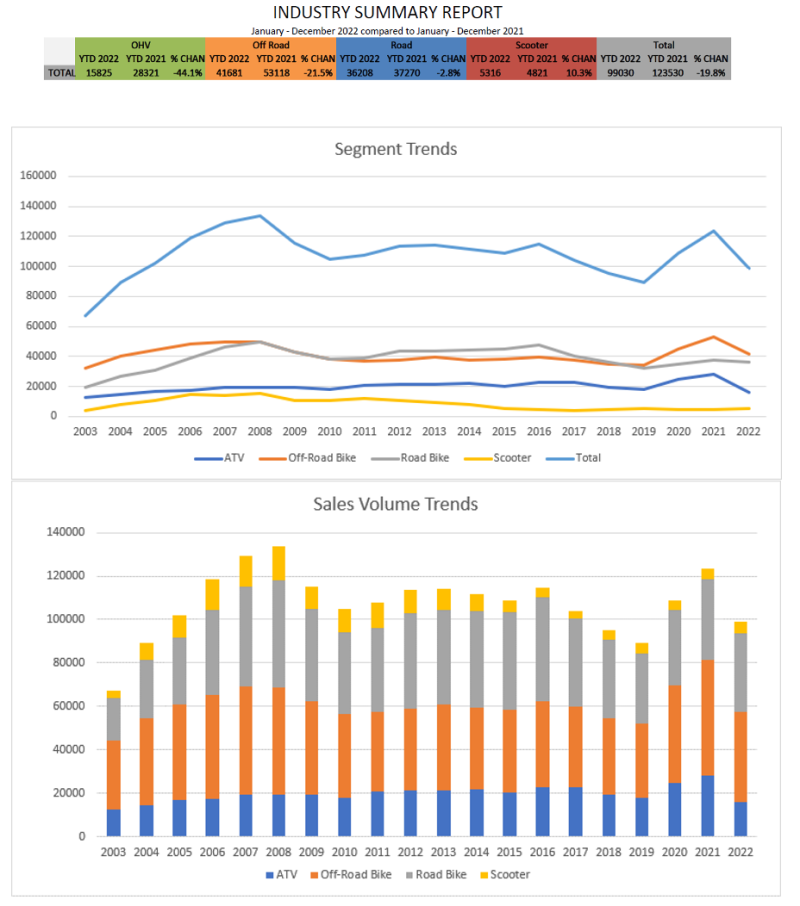The FCAI, the peak body for Australia’s automotive industry, has today released sales figures for motorcycles and off highway vehicles (OHV) for 2022.
A total of 99,030 motorcycles and OHVs were sold representing a decrease of 19.8 per cent on 2021 figures. Off road motorcycles made up 42.1 per cent of total sales with 41,681 units sold in 2022, a decrease of 21.5 per cent on 2021 figures.
Road motorcycles made up 36.6 per cent of total sales recording 36,208 sales. This represents a decrease of 2.8 per cent on 2021 figures.
The OHV segment decreased 44.1 per cent per cent on 2021 figures largely caused by the withdrawal of a large number of all-terrain vehicles from the Australian market following regulatory changes. Total OHV sales were 15,825 representing 15.9 per cent of the overall market.
Scooters make up the smallest portion of the market with 5,316 new units sold. This represents 5.4 per cent of the overall market and is an increase of 10.3 per cent on sales in 2021.
“The rise in interest rates has resulted in consumers tightening their finances. Unfortunately recreational products are often the first items removed from household budgets,” according to FCAI Chief Executive Tony Weber.
“This, combined with ongoing global supply chain pandemic recovery, has led to less than expected overall sales in 2022,” Mr Weber said.
An increase in scooter sales and only a slight decrease in road motorcycle sales points to both the resilience of the Australian market and more first-time riders venturing onto our roads.
“More and more Australians are realising the lower fuel bills, easier parking and quicker commute times that come with two wheeled vehicles,” Mr Weber added.
Australians can expect greater technology and choice in two wheeled and off highway vehicles as the industry moves through 2023.
“We have got increased connectivity, a growing range of safety aids, the emergence of battery electric power and a great range of product choice for consumers. We are looking forward to 2023 and beyond,” Mr Weber said.
